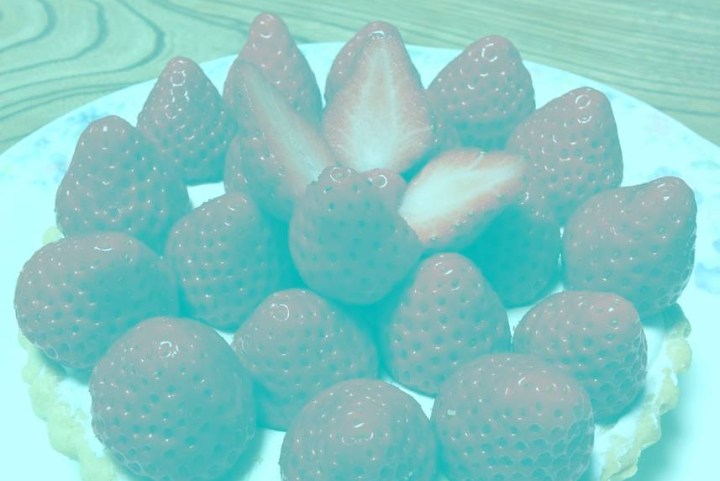
The image comes from Akiyoshi Kitaoka, a professor of Psychology at Japan’s Ritsumeikan University who often tweets optical illusions. Kitaoka adjusted the image’s gamma levels, creating a grayscale image with some hints of green and blue, but no red. Yet looking at the image, the strawberry appears to be red.
The trick is actually a result of the brain’s “auto white-balance setting,” so to speak. Color is a result of light bouncing off of an object, but when the source of the light changes, the color that bounces back changes as well. In photography, that means changing the white balance to compensate for the type of light hitting the object.
@social_brains I isolated a few of the colors that appear most “red” in the strawberries and put them on the white background to the right. pic.twitter.com/GJJ9PJqNxt
— Carson Mell (@carsonmell) February 28, 2017
The human brain has a similar sort of automatic white balance correction — since a strawberry under sunlight looks the same as a strawberry under the glow of a fridge light. When the brain sees the blueish tint to the photograph, it assumes the blue is not from the objects but from the light source and subtracts that blue as an automatic color correction. “Your brain says, ‘the light source that I am viewing these strawberries under has some blue component to it, so I’m going to subtract that automatically from every pixel.’ And when you take gray pixels and subtract out the blue bias, you end up with red,” the National Eye Institute’s Bevil Conway told Motherboard.
The original image of the strawberry cake. My wife made it. pic.twitter.com/RFRpwsDzEQ
— Akiyoshi Kitaoka (@AkiyoshiKitaoka) March 2, 2017
While everyone sees the same plate of red strawberries this time, the optical illusion is based on the same theory of color consistency, or that colors are constant across light sources. With The Dress, some people’s mind corrected the light source for a gray and black dress, others filtered out a different type of light source for a white and gold.



